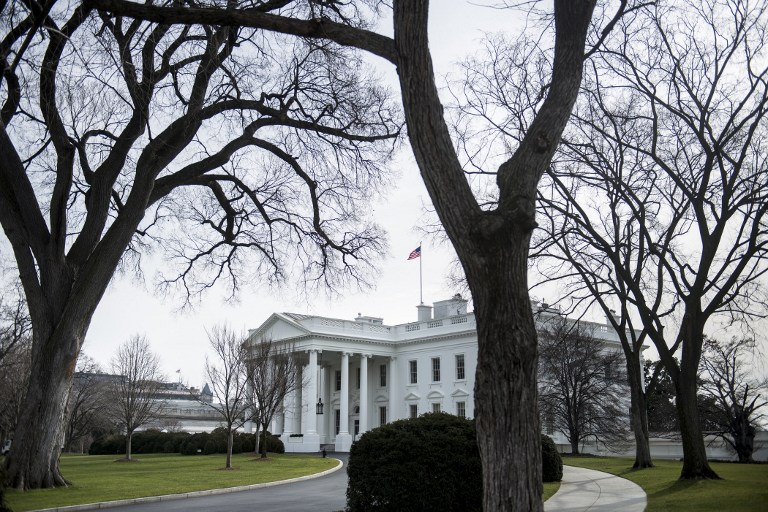SUMMARY
This is AI generated summarization, which may have errors. For context, always refer to the full article.

WASHINGTON, United States – The US economy grew at an annual rate of 2.8% in the third quarter, the government said Thursday (Friday, November 8 in Manila) in a report that revealed weakness in vital consumer spending.
The world’s largest economy accelerated from a 2.5% pace in the second quarter, surprising analysts who had expected the Commerce Department’s first read on third-quarter gross domestic product would show only a 1.9% expansion.
It was the strongest pace of GDP growth in a year. But analysts forecast a weaker fourth quarter this year, after a Washington budget battle forced a 16-day government shutdown in October that shaved an estimated $24 billion from the economy.
“Unfortunately the details of this report are more likely to send chills up your spine than to warm your heart,” said Robert Brusca, chief economist at FAO Economics.
It was the department’s first estimate of GDP growth for the third quarter; but the number could change significantly in its two subsequent estimates.
The July-September pick-up was mainly due to a sharper decline in imports from the second quarter and accelerating rises in private inventory investment and state and local government spending.
Federal government spending, hit by “sequester” budget cuts that began in March, fell 1.7% following a fall of 1.6% in the second quarter.
Inflation heated up, led by price jumps in energy goods and services, but remained well below the two percent target of the Federal Reserve for price stability.
The price index rose 1.8% in the third quarter, following a 0.2% rise in the second. Excluding food and energy prices, the price index increased 1.5%, compared with a 0.8% rise in the prior quarter.
Growth in consumer spending, which accounts for roughly two-thirds of US activity, slowed to 1.5% from 1.8% in the second quarter.
“The all-important service sector, the sector that dominates job growth, saw sales rise by 0.1% at a seasonally adjusted annual rate. This is a pathetically weak showing,” Brusca said.
“You need to go back 17 quarters to find a weaker quarterly growth rate for consumer services spending.”
Personal income growth slowed to 3.8%, from 4.1% in the second quarter, while the increase in real disposable income – adjusted for taxes and inflation – also fell under pressure from rising consumer prices.
“The US economy had somewhat more pep in the previous quarter than expected amid solid gains in construction,” said Sal Guatieri of BMO Capital Markets.
However, he added, weakness in consumer spending and business investment, alongside the large gains in inventories and the government shutdown, “will weigh on growth in the current quarter.”
Scott Hoyt of Moody’s Analytics warned about headwinds from Congress’s decision to use stop-gap budget and debt ceiling measures to reopen the federal government and avoid a debt default.
“Lawmakers’ agreement to extend funding for the government and suspend the debt limit into early next year forestalled worse economic damage for now, but as long as lawmakers stay deadlocked over the direction of the federal budget, the economic recovery will not gain momentum,” he said.
The White House welcomed the headline GDP as good news. The third-quarter expansion is “an indication that the recovery was continuing to gain traction in the months before the government shutdown,” said Jason Furman, chairman of the Council of Economic Advisers.
“We now have an opportunity to build on this progress by increasing certainty for businesses and investing in jobs and growth, while avoiding the types of self-inflicted wounds that restrained the economy in the early part of the fourth quarter,” Furman said.
According to Hoyt, the hit from the government shutdown and the political brinkmanship around the Treasury debt ceiling will cut a half a percentage point of growth in the fourth quarter.
“Instead of picking up pace as previously expected, US growth will remain stuck near a lackluster 2%,” he said. – Rappler.com
Add a comment
How does this make you feel?
There are no comments yet. Add your comment to start the conversation.